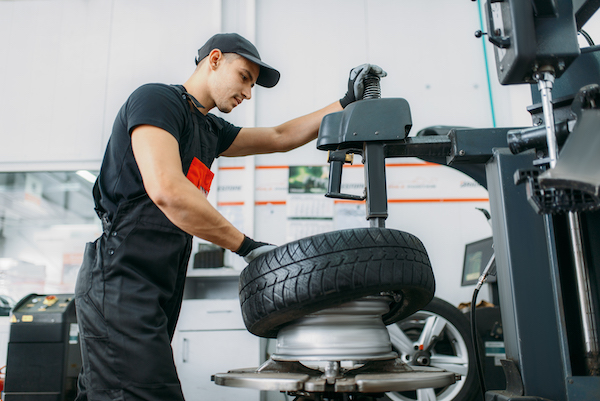Tire Solution: The Influence of Climate Condition
When it comes to guaranteeing optimal efficiency and safety on the roadway, comprehending the impact of climate conditions on tire solution is crucial. In this conversation, we will certainly check out the elaborate relationship between weather condition conditions and tire service, dropping light on the value of weather-specific tire maintenance practices and considerations.
Heat and Tire Efficiency
When exposed to high temperature levels, tires experience adjustments in efficiency that can significantly affect vehicle safety and security and handling. The warmth created from prolonged driving or heat problems creates the tire rubber to soften, causing reduced step life and increased wear. As the rubber comes to be softer, the tire's grasp when traveling lessens, impacting stopping ranges and general grip. In extreme cases, extreme warm can even create tire blowouts, posing a severe safety danger to the car and its owners.
Moreover, high temperature levels can speed up the procedure of tire aging, triggering the rubber to deteriorate extra swiftly. To mitigate the results of heat on tire efficiency, vehicle drivers must frequently check their tire stress, rotate tires to make sure even use, and inspect for any type of signs of damages.
Cold Weather Impacts
Cold weather condition problems can have a considerable influence on tire efficiency and safety. In chilly climate, tires might likewise lose air stress a lot more quickly, which can affect managing and gas performance.
To minimize the results of chilly climate on tires, it is crucial to frequently inspect tire stress and inflate them to the supplier's recommended levels. Using winter season or all-season tires developed for cool climate conditions can also improve traction and grip on icy or snowy roadways - tires morris il. Correct tire upkeep, consisting of routine assessments for wear and damages, comes to be also a lot more essential throughout colder months to ensure optimum efficiency and security
Rainy Conditions Impact
Throughout rainy conditions, tire performance and security can be significantly affected by the damp road surfaces and minimized visibility. The walk pattern of tires plays a critical role in preserving traction on wet roadways. Tires with damaged treads are much more prone to hydroplaning, where a layer of water accumulates between the roadway and the tire surface area, bring about loss of traction. To fight this, motorists need to frequently check their tires for ample tread depth and consider purchasing tires particularly made for damp browse this site problems.

Snow and Tire Safety And Security
When driving in snowy conditions, having the best tires can make a substantial difference in safety and security and performance. Winter months tires are created with unique rubber compounds and step patterns to offer far better traction on snow and ice contrasted to all-season tires.
In addition to utilizing winter tires, it is critical to ensure they are appropriately inflated. Winter can cause tire pressure to go down, affecting traction and handling (morris tire and alignment). Regularly inspecting and keeping the correct tire pressure is crucial for optimal performance in snowy problems

Weather-Related Tire Maintenance
When confronted with various weather, appropriate tire maintenance comes to be a critical element of car safety and efficiency. Weather-related tire upkeep encompasses a series of techniques targeted at guaranteeing optimum tire feature and longevity in various weather condition scenarios. One vital element of weather-related tire maintenance is tire stress policy. Fluctuating temperature levels can cause tire stress to vary, impacting grip and fuel effectiveness. Frequently adjusting and inspecting tire pressure according to maker recommendations is blog here crucial for risk-free driving in transforming weather. Furthermore, tire step depth plays a substantial function in taking care of different climate elements. Tires with appropriate tread depth give better grasp on wet or icy roads, lowering the risk of hydroplaning or skidding. Examining tire tread consistently and changing tires when walk wear gets to a certain depth is essential for maintaining traction and security in adverse weather condition. By prioritizing weather-related tire maintenance, motorists can enhance security, boost lorry performance, and prolong the life expectancy of their tires.
Final Thought
In verdict, weather condition conditions have a substantial effect on tire performance and security (tire shop morris). From warmth impacting tire stress and use to cool weather condition reducing grip, it is necessary to consider the climate when preserving and making use of tires.
In this conversation, we will certainly check out the intricate connection between weather condition conditions and tire service, losing light on the value of weather-specific tire upkeep methods and factors to consider.
